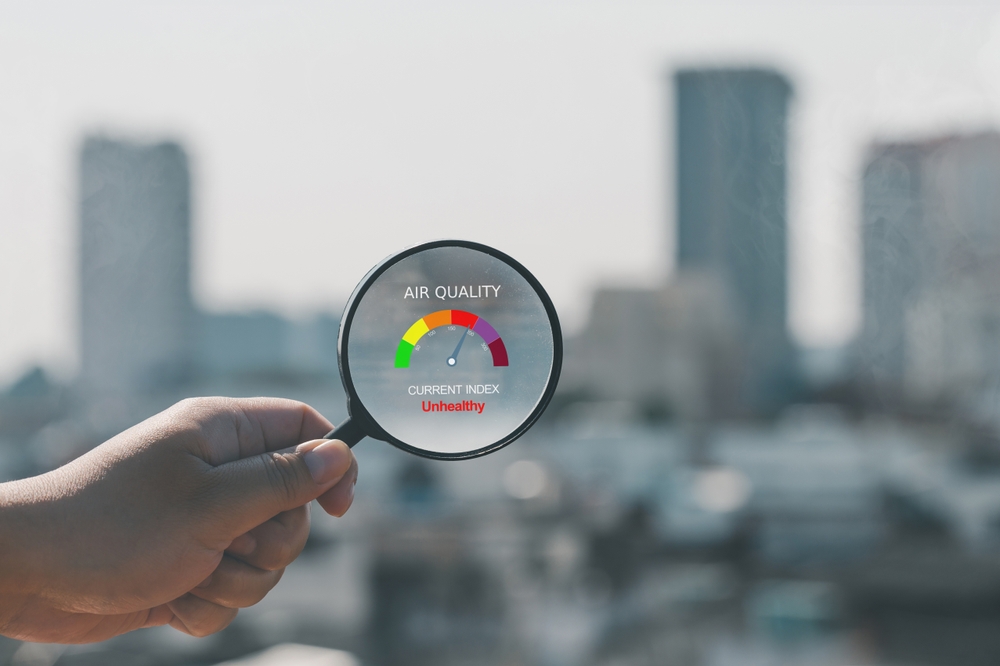The invisible cloud you move through daily in city environments isn’t just air—it’s a complex cocktail of particulate matter, heavy metals, volatile organic compounds, and other pollutants that gradually accumulate in your body. While you can’t see these microscopic invaders, your body is working overtime to process and eliminate them, often without complete success.
Urban air pollution represents one of modern life’s most unavoidable toxin exposures. Even with increasing awareness and improving standards in some cities, the reality remains that urban dwellers face significant environmental pollutant loads that can trigger inflammation, oxidative stress, and gradual toxic accumulation in tissues throughout the body.
The good news? Your body possesses remarkable detoxification capabilities that can be naturally supported and enhanced. Let’s explore science-backed approaches to help your body more effectively clear urban air pollutants, potentially reducing their long-term impact on your health and vitality.
The respiratory cleanse your lungs are craving
Your respiratory system bears the front-line burden of urban air pollution, with particulate matter and gaseous pollutants making direct contact with delicate lung tissues during each breath. Supporting your body’s natural lung clearance mechanisms can significantly enhance your ability to expel these accumulated toxins.
Steam inhalation represents one of the simplest yet most effective respiratory detox practices. The warm moisture helps loosen mucus and trapped particles, allowing your lungs to more effectively clear accumulated pollutants. Adding a few drops of eucalyptus or thyme essential oil enhances this effect, as these plant compounds help dilate airways and possess natural antimicrobial properties that address any opportunistic infections taking hold in irritated tissues.
Controlled deep breathing exercises work by engaging parts of your lungs that shallow breathing leaves dormant. The bottom portions of your lungs receive less airflow during normal breathing but contain significant vasculature for gas exchange. Deep breathing techniques like box breathing or diaphragmatic breathing recruit these areas, improving circulation to pollution-exposed tissues and enhancing the removal of particulate matter through improved lymphatic flow.
Physical activities that promote the “percussion effect” help dislodge trapped particles from lung tissues. Hiking on irregular terrain, jumping exercises, or specific yoga sequences with rhythmic movement patterns create gentle vibrations that help shake loose accumulated pollutants from airway walls. These activities also increase your breathing rate and depth, further supporting the respiratory cleansing process.
The liver support your detox pathways need
Your liver serves as the primary chemical processing plant for pollutants that enter your bloodstream after being absorbed through your lungs or digestive tract. Urban air pollutants place significant demands on this organ’s detoxification pathways, which can become overburdened without proper support.
Cruciferous vegetables provide compounds that directly upregulate Phase 2 detoxification enzymes in your liver, enhancing its ability to process and eliminate environmental pollutants. Broccoli, cauliflower, and brussels sprouts contain sulforaphane—a potent activator of these pathways that has been shown in research to help metabolize airborne pollutants more efficiently. Consuming these vegetables daily provides consistent support for these critical detox mechanisms.
Bitter foods stimulate bile flow, a key component of your body’s toxin elimination process. Urban air pollutants that enter your bloodstream often become concentrated in bile for eventual excretion. Foods with natural bitterness like dandelion greens, arugula, and endive help ensure this biliary excretion pathway functions optimally, preventing potential reabsorption of toxins during digestion.
Milk thistle has earned its reputation as the premier liver-supporting herb through extensive research showing its ability to both protect liver cells from damage and enhance their regeneration. The active compound silymarin has been demonstrated to help safeguard the liver against the oxidative stress generated during detoxification of environmental pollutants. A daily milk thistle supplement or tea provides consistent support during periods of high urban air exposure.
The antioxidant shield your cells are missing
Urban air pollution creates significant oxidative stress in your body—essentially causing cellular “rust” as reactive compounds damage cell membranes, proteins, and even DNA. Building a robust antioxidant defense system helps neutralize these harmful compounds before they can cause lasting damage.
Colorful berries provide anthocyanins and other polyphenols that have shown remarkable ability to neutralize the specific free radicals generated by air pollution exposure. Blueberries, blackberries, and cherries have demonstrated particular efficacy in research examining protection against pollution-induced oxidative stress. Their deep pigments signal the presence of these protective compounds, making “eating the rainbow” a practical strategy for enhancing your pollution defense system.
Vitamin C has demonstrated specific protective effects against the respiratory damage caused by urban air pollutants. Beyond its general antioxidant functions, vitamin C helps regenerate glutathione—your body’s master antioxidant that plays a crucial role in detoxifying environmental chemicals. While supplements can help, focusing on food sources like bell peppers, citrus fruits, and leafy greens provides the full spectrum of supportive compounds that enhance vitamin C’s protective effects.
Adaptogens represent a special category of plants that help your body resist various stressors, including environmental toxins. Ashwagandha, holy basil, and rhodiola have demonstrated ability to upregulate your body’s production of endogenous antioxidants—essentially teaching your cells to create their own protection against pollution-induced oxidative damage. These traditional herbs work gradually but sustainably, building resilience rather than simply providing temporary protection.
The microbiome support for unexpected allies
Your gut microbiome plays a surprisingly important role in protecting against urban air pollution effects, with research revealing that beneficial bacteria can help metabolize certain environmental toxins and reduce their impact on your health.
Fermented foods introduce beneficial bacteria that research has linked to enhanced detoxification capacity. Kimchi, sauerkraut, and kefir contain diverse probiotic strains that help maintain gut barrier integrity while also producing compounds that can bind to environmental toxins, preventing their absorption into your bloodstream. Regular consumption maintains these beneficial populations, creating a living filter for pollutants that enter your digestive tract.
Prebiotic fibers feed your existing beneficial bacteria, helping them thrive and maintain optimal detoxification support. Jerusalem artichokes, garlic, onions, and dandelion root are particularly rich in inulin and other prebiotic fibers that preferentially nourish bacterial strains associated with enhanced detoxification capacity. These foods essentially provide fuel for your internal detoxification allies.
Polyphenol-rich foods like pomegranates, green tea, and dark chocolate contain compounds that both support beneficial bacteria and help reduce inflammation triggered by pollution exposure. Research shows these compounds can help modulate gut microbiome composition toward profiles associated with enhanced resilience against environmental toxins, creating a multifaceted approach to detoxification support.
The hydration strategy beyond just drinking water
Proper hydration forms the foundation of effective detoxification, providing the medium necessary for toxin transport and elimination while supporting optimal function of detox organs. However, urban air pollution detox requires a more sophisticated approach than simply counting water glasses.
Electrolyte balance significantly impacts your body’s ability to efficiently move toxins through elimination pathways. Minerals like potassium, magnesium, and sodium help maintain proper cellular fluid balance and support the function of detoxification organs. Coconut water, celery juice, and mineral-rich broths provide naturally balanced electrolytes that enhance your body’s ability to flush pollution byproducts through urine and sweat.
Hydrating foods with high water content and detoxifying compounds offer advantages beyond plain water. Cucumbers, watermelon, and citrus fruits deliver hydration directly to cells along with synergistic compounds that support detoxification pathways. These foods essentially provide “structured water” that some research suggests may be more readily utilized by your cells than plain drinking water.
Strategic timing of fluid intake can enhance detoxification efficiency. Consuming 16-20 ounces of water upon waking helps flush toxins that your liver processed during its nighttime regeneration phase. Similarly, hydrating consistently throughout the day rather than all at once helps maintain optimal kidney filtration, allowing these crucial detoxification organs to work at peak efficiency.
The movement practices that accelerate pollutant clearance
Physical activity dramatically impacts how efficiently your body processes and eliminates urban air pollutants, with specific types of movement offering particular benefits for detoxification pathways.
Lymphatic stimulation through rebounding, dry brushing, and specific yoga sequences helps move toxins that have accumulated in tissues toward elimination channels. Unlike your circulatory system with its heart pump, your lymphatic system relies entirely on muscle movement and gravity to flow properly. These practices create the necessary movement to keep pollution byproducts moving toward elimination rather than remaining stored in tissues.
Sweat-inducing activities like hot yoga, sauna sessions, or cardiovascular exercise activate one of your body’s primary elimination routes for certain urban pollutants. Research has identified numerous heavy metals and persistent organic pollutants in sweat, confirming this pathway’s importance for environmental toxin elimination. Regular sweating sessions—ideally 2-3 times weekly—provide consistent support for this crucial detox avenue.
Breathwork combined with movement creates a particularly powerful detoxification synergy. Practices like qigong, certain yoga styles, and conscious walking combine controlled breathing patterns with specific movements that enhance oxygen delivery to tissues while supporting lymphatic flow. This combination helps optimize both the processing of toxins and their transport toward elimination channels.
The sleep connection you’re overlooking
Quality sleep represents one of the most underappreciated yet powerful detoxification supports, with research confirming that specific cleansing processes occur primarily during deep sleep phases.
The glymphatic system—your brain’s specialized waste clearance mechanism—activates primarily during deep sleep stages. This recently discovered system removes accumulated pollutants and metabolic waste from brain tissues, essentially performing a nightly cleanse of your most vulnerable organ. Prioritizing consistent, uninterrupted sleep provides the necessary time for this crucial detoxification process to complete its cycles.
Sleep position impacts how efficiently your brain clears environmental toxins. Research has found that the lateral position—sleeping on your side—enhances glymphatic clearance compared to sleeping on your back or stomach. This simple adjustment helps optimize your brain’s natural detoxification system, potentially reducing the neurological impact of urban air pollution exposure.
Temperature regulation during sleep influences detoxification efficiency as well. Slightly cooler sleeping environments—around 65-68°F—appear to enhance both the quality of deep sleep and the activity of recovery and cleansing processes. This temperature range supports optimal melatonin production, which research has shown provides protective effects against pollution-induced oxidative stress.
The fasting window that enhances cellular cleanup
Intermittent fasting creates metabolic conditions that activate powerful cellular cleaning processes, helping your body more efficiently remove pollutant-damaged components and enhance overall detoxification capacity.
Autophagy—your cells’ self-cleaning process—accelerates significantly during fasting periods of 14+ hours. This mechanism helps remove damaged cellular components, including those affected by urban air pollutants. The process essentially recycles pollution-damaged parts of cells that might otherwise contribute to inflammation and tissue dysfunction, creating cellular renewal that helps counter pollution exposure effects.
Detoxification enzyme systems show enhanced activity during fasting windows. Research has found that many Phase 1 and Phase 2 detoxification enzymes in the liver become more active during fasting periods, potentially helping process environmental toxins more efficiently. This metabolic shift essentially turns up the dial on your body’s natural pollution processing capacity.
Insulin sensitivity improvement from regular fasting intervals helps address one of urban air pollution’s most common metabolic effects. Research has linked air pollution exposure to insulin resistance through inflammatory and oxidative stress mechanisms. Intermittent fasting helps counter this effect, potentially reducing one of the most common metabolic impacts of city living.
The urban environment presents unavoidable pollution challenges, but supporting your body’s natural detoxification systems can significantly reduce their impact on your health. By incorporating these evidence-based strategies into your regular routine, you’re not just passively accepting pollution exposure but actively enhancing your body’s resilience against it. This proactive approach helps maintain your vitality and well-being despite the environmental challenges of modern urban life.

















